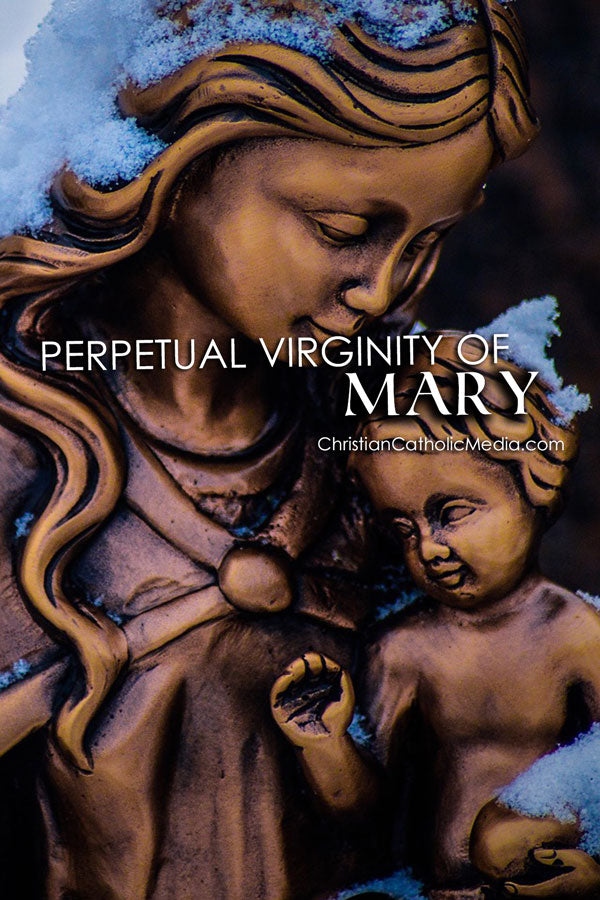
Perpetual Virginity Of Mary
The perpetual virginity of Mary is a Marian Doctrine of the Catholic Church that has its foundations in what the Church has always held as divinely revealed truths about the Divinity and Humanity of Jesus Christ, and God’s plan of salvation for man.
The doctrine holds that Mary was always a virgin; before, during, and after Christs birth and remained a virgin for her entire life (Aeiparthenos-ever virgin in the Greek). It was a belief held throughout all of early Christian history.
First and Second Century
1st Century writings from the Church focus on biblical interpretations of the gospel accounts relative to the virginal conception of Christ. A document from the 2nd Century, The Protoevangelium of James, speaks of Mary’s virginity before giving birth, the miraculous way in which she gave birth, and her physical virginity even after giving birth. These writings also mention the scriptures referencing Jesus’s brothers as being sons of Joseph from a previous marriage.

Church Fathers and Reformers Alike
There are claims by St. Jerome that St. Irenaeus (c. 130- C. 202) taught perpetual virginity in the 2nd century. Origin (185 – 284) documented strong support for the “brothers” of Jesus being Josephs from a former marriage.
By the 4th Century the Perpetual Virginity is well attested to. The Church Fathers affirmed the belief in her perpetual virginity within the 3rd century writings of St. Hippolytus of Rome, who called Mary "the tabernacle exempt from defilement and corruption", and 4th century works of St. Athanasius, Epiphanius, Hilary, Didymus, Ambrose, Jerome, and Pope Siricius.
During the Middle Ages the doctrine of Perpetual Virginity of Mary was defended and taught by St. John Chrysostom (347-407), Gregory of Nyssa and Augustine of Hippo, with the ever-growing stress placed on Marian piety. The role of Mary began to appear in the context of the history of salvation. St. Augustine produced several writings in defence of the doctrine of perpetual virginity by the end of the 4th century.
The Anglo-Catholic, Roman Catholic, and Eastern and Oriental Orthodox Churches expressed this belief in their liturgies making reference to “ever virgin" (Greek: ἀειπάρθενος, translit. aeiparthenos). The Assyrian Church of the East also referred to Mary as “Ever-Virgin”.
Protestant reformers also strongly supported the doctrine including Luther, Latimer, and Cranmer, as well as John Wesley, founder of the Methodist Church.
The Fifth Ecumenical Council held at Constantinople in 553 refer to Mary as aeiparthenos (i.e. ever-virgin) and a declaration of anathema was established against any who would deny the 'three chapters' on Marian doctrine. The declaration of the dogma was set down by Pope St. Martin I at the Lateran Synod in 649 A.D., where he declared it an article of faith.
Biblical Support
Biblical interpretation is paramount in understanding the doctrine of The Perpetual Virginity of Mary. Many scholars throughout the years have weighed in on the gospel accounts of the birth of Jesus Christ.
Most focus has been in understanding the accounts in the original Greek, interpretation of specific word meaning in relation to the context, including time, in which it was written. Again, interpretation, as taught within the Catholic Church, must be in light of Apostolic tradition passed on by the Church and the entire canon of scripture.
Jesus, seen as the fulfilment of the Law, was contained within Mary, the Ark of the New Covenant. Just as the Ark was holy and could not be deviled or even touched, so to the Virgin Mary was untouched by man.
Much of the contention revolved around the interpretation of the word “until’ in the Greek “Ηώς”. The word used in Matthew 1:25 is then compared to Jesus’s use of the word in Matthew 28:20 and in the context of its use in the Greek language. Within this context the word “until” does not refer to two separate time periods, but simply denotes a single period in time, and does not imply any necessary change afterward.
One of the best answers to the denial of Mary’s perpetual virginity was written in the 4th century and Martin Luther affirmed it (1946) and John Calvin affirmed it as well in his commentary on Matthew 1:25.
Biblical interpretation in the Catholic tradition requires reading the New Testament in light of the Old Testament. God reveals all His plan of salvation throughout scripture.
Mary’s perpetual virginity, as well as all other Marian Doctrine, tell us who Christ is. The Perpetual Virginity of Mary not only points to the purity of Mary herself, but also to the divine nature of her Son. He is the Son of God made flesh, The Savior of the world, 100% divine and 100% human. This has been a foundation of all doctrine of the Catholic Church and leads all believers to contemplate the profound mystery of the incarnation. This vessel, the womb of the Blessed Virgin Mary, that contained the true God, must be set apart for this extraordinary purpose and will never lose its sacredness.
Article written by Latrell Castanon for Christian Catholic Media
Latrell Castanon is a freelance writer who studied Catholic Theology at St. Joseph's College of Maine.
